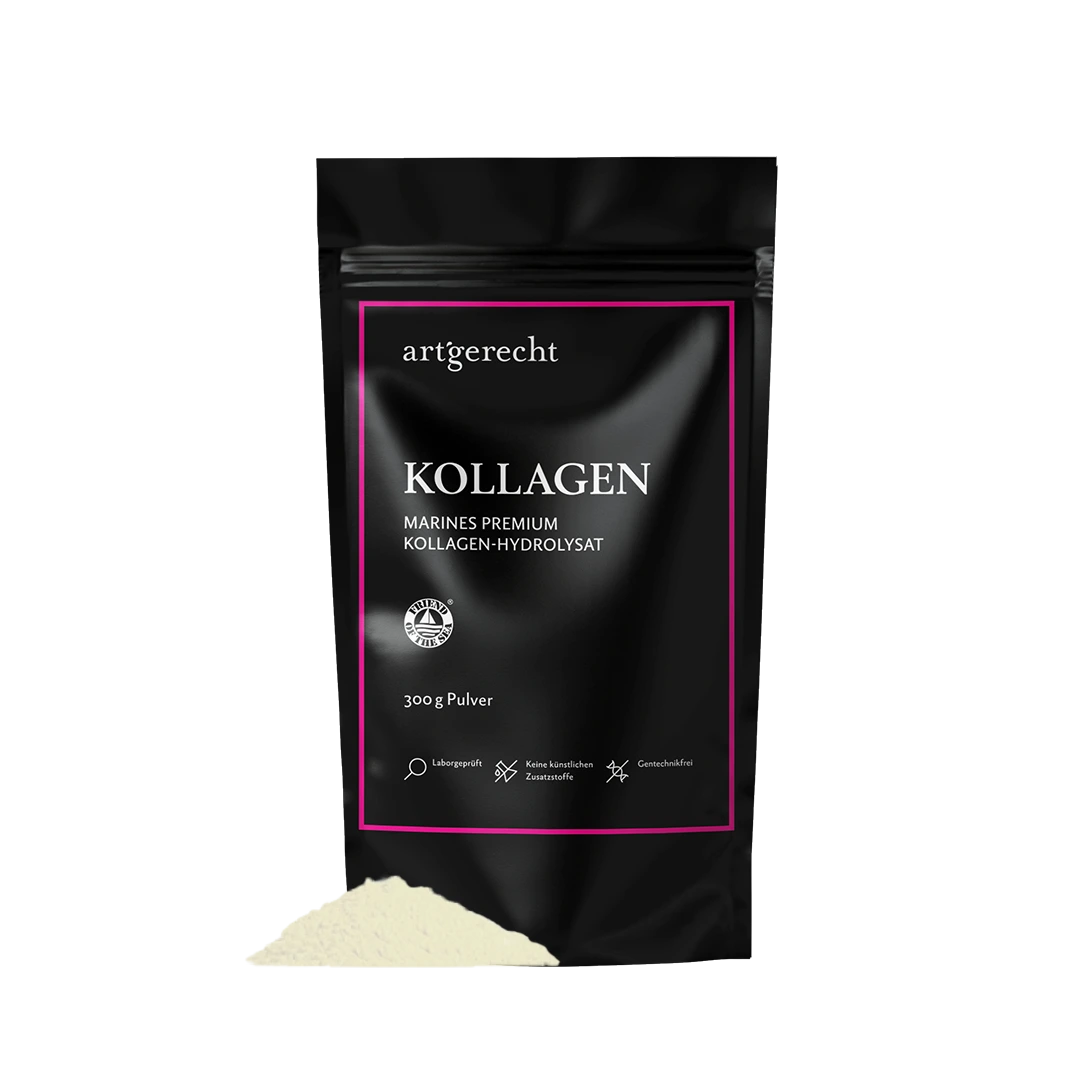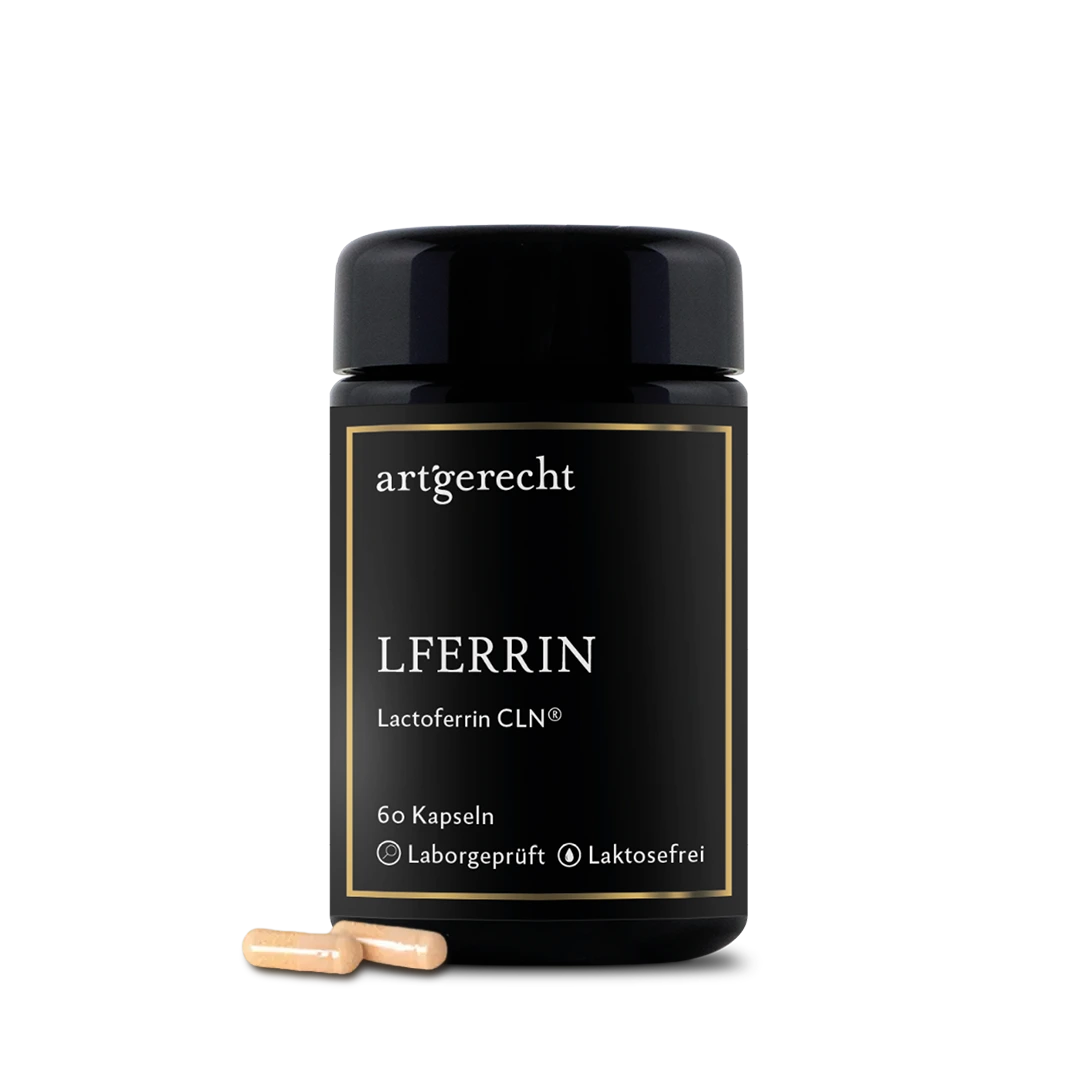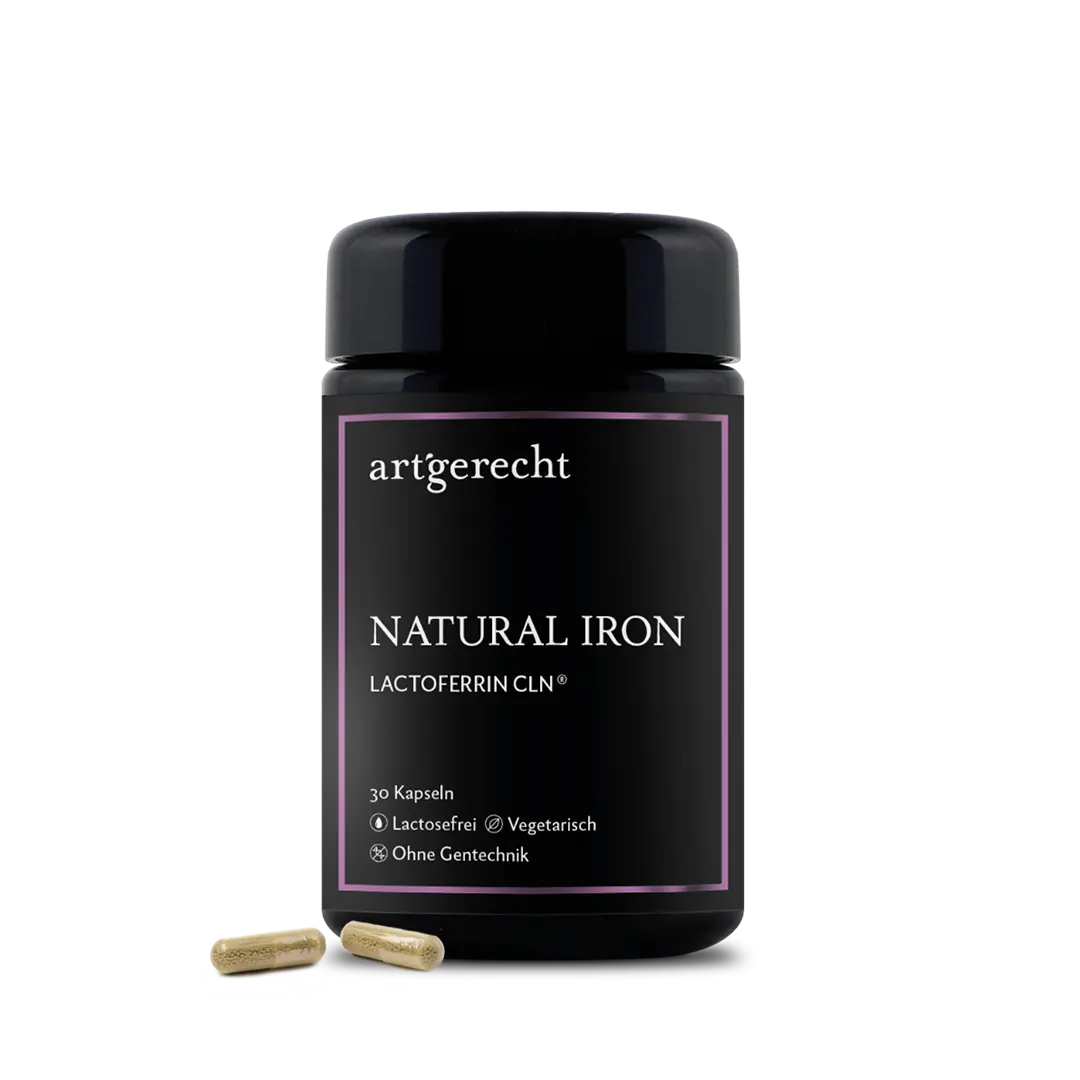- How does training on an empty stomach work and what happens in the body?
- What happens during nutrition training
- Movement on a sober stomach – Our evolutionary perspective
- The best methods and tips for parent training
- Nuechtern-trainieren – Geheimtipp für die Fettverbrennung?
- Which sport is best suited for nutrition training?
- Tip: Support through amino acids
- What's the best thing to eat after training?
- Recipe inspiration vegetable buffer
- Literature:
-
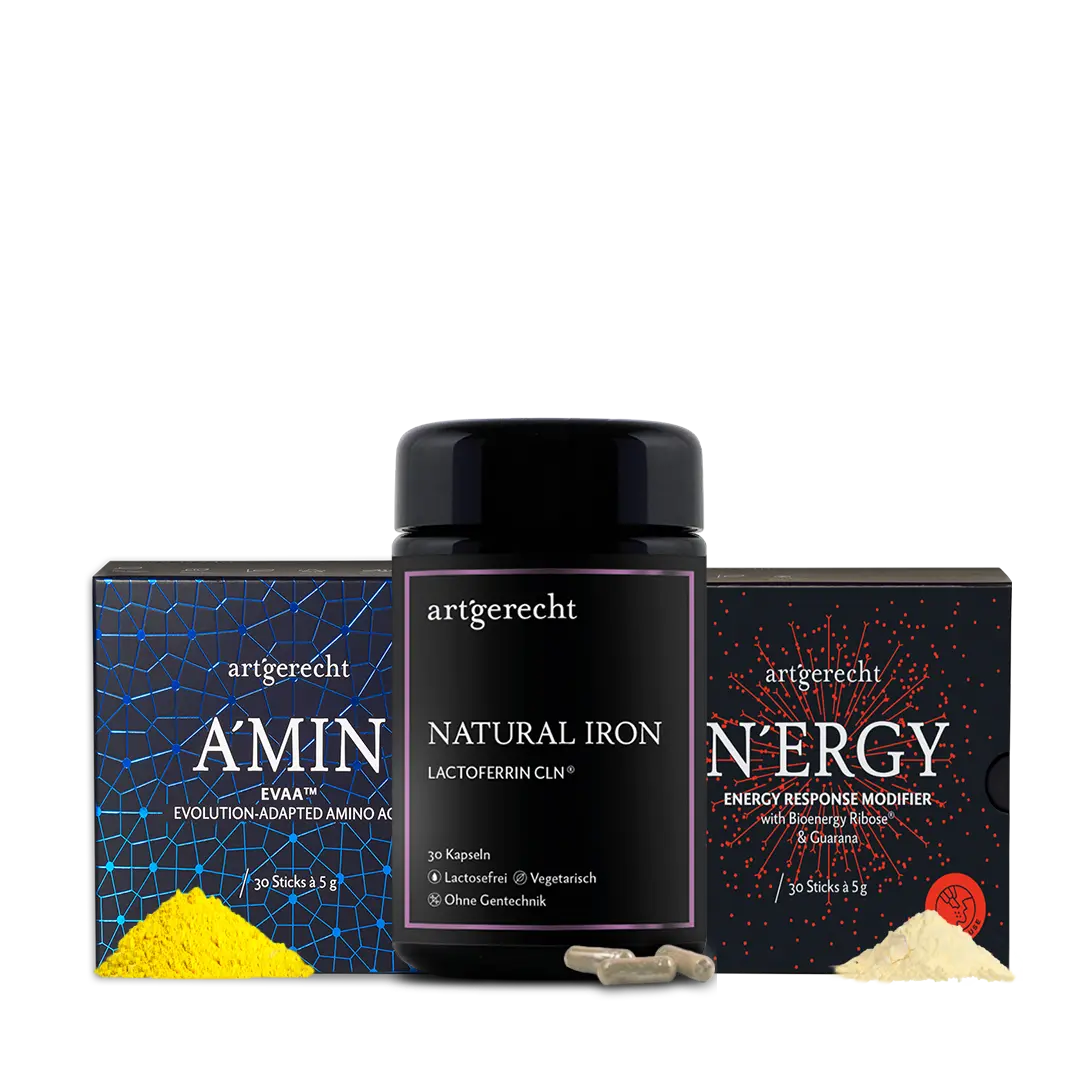 €115.90
€115.90
For many, it probably sounds illogical at first to train on an empty stomach. After all, where do we get the energy from when we exercise before breakfast? doesn't that inevitably lead to a drop in performance? We explain why it makes sense to train on an empty stomach and what positive effects it can have on your body and your performance.
How does training on an empty stomach work and what happens in the body?
In order to have energy available in the morning, we have an endogenous system - our biorhythm. This is a genetically controlled 24-hour rhythm that serves as a kind of „clock“ for the activity of every organ and every cell [1]. This clock activates our stress hormone axis [2], which, by releasing cortisol, ensures that we wake up and also sets our motor system in motion. This is also known as the cortisol awakening response (CAR). [4] Cortisol controls many metabolic processes: For example, the formation of new energy in the form of glucose in the liver, the increase in cerebral blood flow and energy supply in the brain and muscles as well as the regulation of the immune system [5]. The body therefore physiologically supplies itself with energy. It therefore does not initially need any food from outside.
What happens during nutrition training
Working out on an empty stomach consumes energy - among other things in the form of sugar. This means that less sugar is available for our cells. This also means that less energy can be produced there in the form of ATP (universal energy carrier in the body). The cell registers the lack of energy with the so-called enzyme AMPK (AMP-activated protein kinase). This ensures that more ATP is produced from the reduced amount of sugar: A kind of „Öconomization of the energy balance“ therefore takes place [6].
In order for this process to work:
- More mitochondria (power plants of the cells) must be formed to increase oxygen-dependent energy production. [7]
- New sugar transporters are formed that improve the uptake of sugar from the bloodstream into the cell. [13]
Both processes are caused by AMPK, so that after some time of internal training, sugar can be absorbed more easily and processed into a lot of ATP in the new mitochondria. Overall, this optimizes energy production and fat acids are dissolved from the body's own reserves fat cells and processed into ATP. The cells become more sensitive to insulin again and the sugar balance is optimized.
These mechanisms are massively reduced when carbohydrates are consumed or an extensive breakfast is eaten before or during sporting activity. [8
Movement on a sober stomach – Our evolutionary perspective
For our ancestors, when it came to food intake, the rule was: first move, then eat. This system dates back to a time in evolution when the constant availability of food - especially in the morning - was not possible without prior gathering or hunting. Homo sapiens therefore had to be fit enough to draw on their reserves and be motivated to move even on an empty stomach in order not to starve. This system is anchored in our genes and is regulated by hormones and nerves via complex mechanisms. The neurotransmitter dopamine plays an important role in this. Among other things, it is responsible for our curiosity and is also released when we are hungry, which in turn motivates us to exercise [9].
The best methods and tips for parent training
Exercising on an empty stomach offers various benefits, such as an increased fat burning[10] or a better use of energy. So to speak, a „Öconomization of the metabolism“ [11]. Incidentally, this also applies to intermittent fasting in general. Both intermittent fasting and regular exercise help to optimize our body composition[12].
The “disadvantage”: The positive effects of night-time exercise are not immediate. Performance is also unlikely to be achieved immediately. So don't go from „0 to 100“ the first time. Because being hungry and feeling hungry also mean stress for the body, i.e. increased cortisol release. Although this can be compensated for by exercise, it should not be exaggerated, especially in the early stages. We therefore recommend moderate endurance units and a slow approach to exercise. In preparation, you can fast intermittently, preferably overnight, without exertion (16 hours for men, 10-12 hours is also sufficient for women). In the morning, start with light, short units and gradually increase to longer, moderate endurance units (e.g. running or cycling)
Nuechtern-trainieren – Geheimtipp für die Fettverbrennung?
Exercising on an empty stomach also boosts your metabolism. Exercising on an empty stomach reduces the amount of sugar in the bloodstream and automatically optimizes the body's energy supply. This is because if the required energy cannot be obtained from food, the body automatically draws on its own reserves, which has a positive effect on reducing the body fat percentage.
At the same time, our organism begins to counteract future deficiency situations and adapt: A mechanism is triggered in the cells by the resulting energy deficiency, which improves glucose uptake. This means that we become more insulin-sensitive and new mitochondria are formed. In the future, we will be able to produce as much energy as possible in the form of ATP with just a few energy sources.
Which sport is best suited for nutrition training?
- Basically, endurance sports, such as running or cycling, are very suitable for training sessions on an empty stomach.
- If you mainly want to reduce fat deposits on your stomach, i.e. the visceral fat reserves, it is best to train moderately, but for a few hours at a time. For example, longer hikes through nature are good for body and mind alike and are effective. Of course, such long exercise sessions don't have to take place every day.
- Strength training to strengthen the muscles is of course also possible, but at a lower intensity .
- Morning High Intensity Interval Training (HIIT), i.e. short, intensive units and exercises, are also well suited, as the body goes straight into increased fat burning. Here, too, the following applies: approach with caution and listen to your own body.
Important: If you experience dizziness, tachycardia or exhaustion during shoulder training, always take a break and start more carefully the next time. It is not healthy and will not lead to success if you overstrain your body.
Tip: Support through amino acids
If muscles are to be built up or faster regeneration is desired after endurance or strength training, free amino acids can be consumed immediately after training and are available to the body within a few minutes. With increased exercise or a low protein nutrition, it is recommended to take 5-6 grams twice a day. Higher dosages may be necessary for very intensive exercise. Absorption is highest on an empty stomach (at least half an hour before eating). However, it can be taken at any time due to its high bioavailability and the fact that digestion is not necessary.
What's the best thing to eat after training?
It's best to wait around 30 to 90 minutes after training before eating your first meal. Ideally, you should then prepare a species-appropriate meal. This should be rich in:
- Intracellular carbohydrates, such as root vegetables (e.g. carrots, parsnips, parsley roots, radishes, salsify)
- Good fats (e.g. olives, coconut oil, nuts, fatty fish)
- High-quality protein sources (e.g. fish, meat or eggs from species-appropriate animal husbandry or catch).
Recipe inspiration vegetable buffer
A recipe suggestion for a species-appropriate meal after sport:
Gemüsepuffer with smoked trout and wild herbs salad
Ingredients
Buffer:
- 600 g root vegetables (carrots, parsley root, parsnip, carrots)
- 2 smoked trout fillets
- 2-3 spring onions
- 4 stalks of parsley
- 4 stalks of dill
- 3 eggs
- 1 teaspoon of salt
- 1 strong pinch of nutmeg
- 1 msp. cayenne pepper
- ½ teaspoon of ground fenugreek seeds
- 1 tsp coconut flour or locust bean gum
- 2-3 tbsp olive oil or ghee
- pepper
Salad:
- 4 handfuls of wild herbs
- 2 tablespoons of olives
- 1 tbsp white wine vinegar, alternatively lemon juice
- Salt
Preparation
Buffer:
- Pulp the root vegetables and grate coarsely into a bowl.
- Cut the spring onions into fine strips. Finely chop the parsley.
- Mix everything together with eggs, nutmeg, salt, cayenne pepper and ground fenugreek seeds and coconut flour.
- Heat the olive oil or ghee in a pan. Using a tablespoon, place small portions of vegetable pancakes in the pan, flatten slightly and fry slowly on both sides until golden brown. Remove the finished pancakes and keep warm in the oven. Continue in this way until all the pancakes are cooked.
- Mix a dressing of olive oil, vinegar and salt for the wild herbs salad and mix with the washed salad.
- Serve the salad with dill tips, smoked trout, freshly ground pepper and wild herb salad.
Salad:
Good appetite!
Literature:
- Schibler 2005
- Dumbell, Matveeva, and Oster 2016
- Dedovic and Ngiam 2015
- Clow et al. 2010
- Fries, Dettenborn, and Kirschbaum 2009
- Kjøbsted et al. 2018
- Cant and Auwerx 2009
- Civitarese et al. 2005
- Pruimboom, Raison, and Muskiet 2015
- Bachman, Deitrick, and Hillman 2016
- Hansen, De Strijcker, and Calders 2017
- Anton et al. 2018
Passende Produkte
-
 €115.90
€115.90
Kürzlich hinzugefügte Beiträge
-
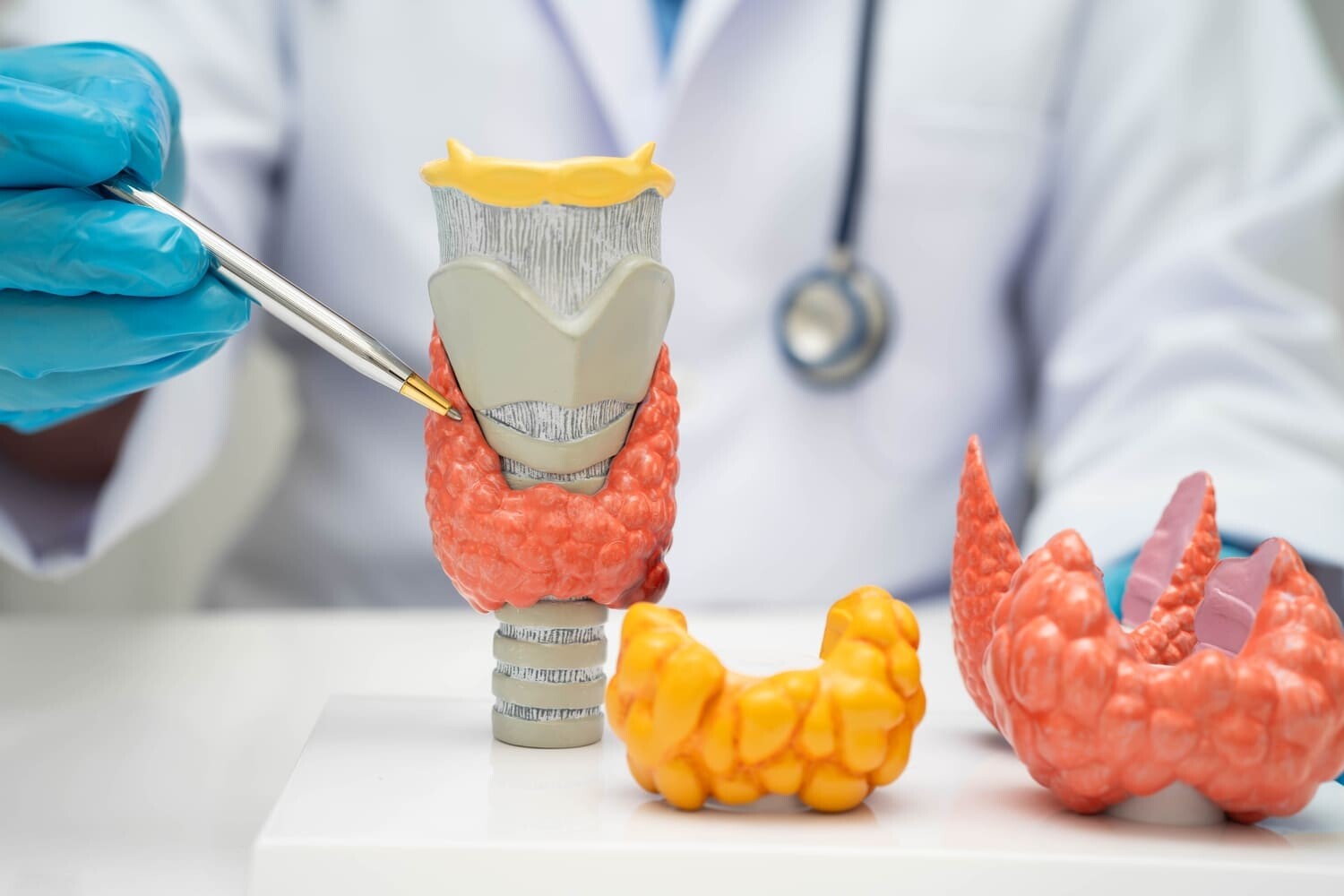 Hypothyreose und Übergewicht – Aktuelle Erkenntnisse und DatenSchilddrüsenunterfunktion verlangsamt den Stoffwechsel und begünstigt Gewichtszunahme. Erfahre Symptome und Tipps zur Unterstützung Deines Körpers.
Hypothyreose und Übergewicht – Aktuelle Erkenntnisse und DatenSchilddrüsenunterfunktion verlangsamt den Stoffwechsel und begünstigt Gewichtszunahme. Erfahre Symptome und Tipps zur Unterstützung Deines Körpers. -
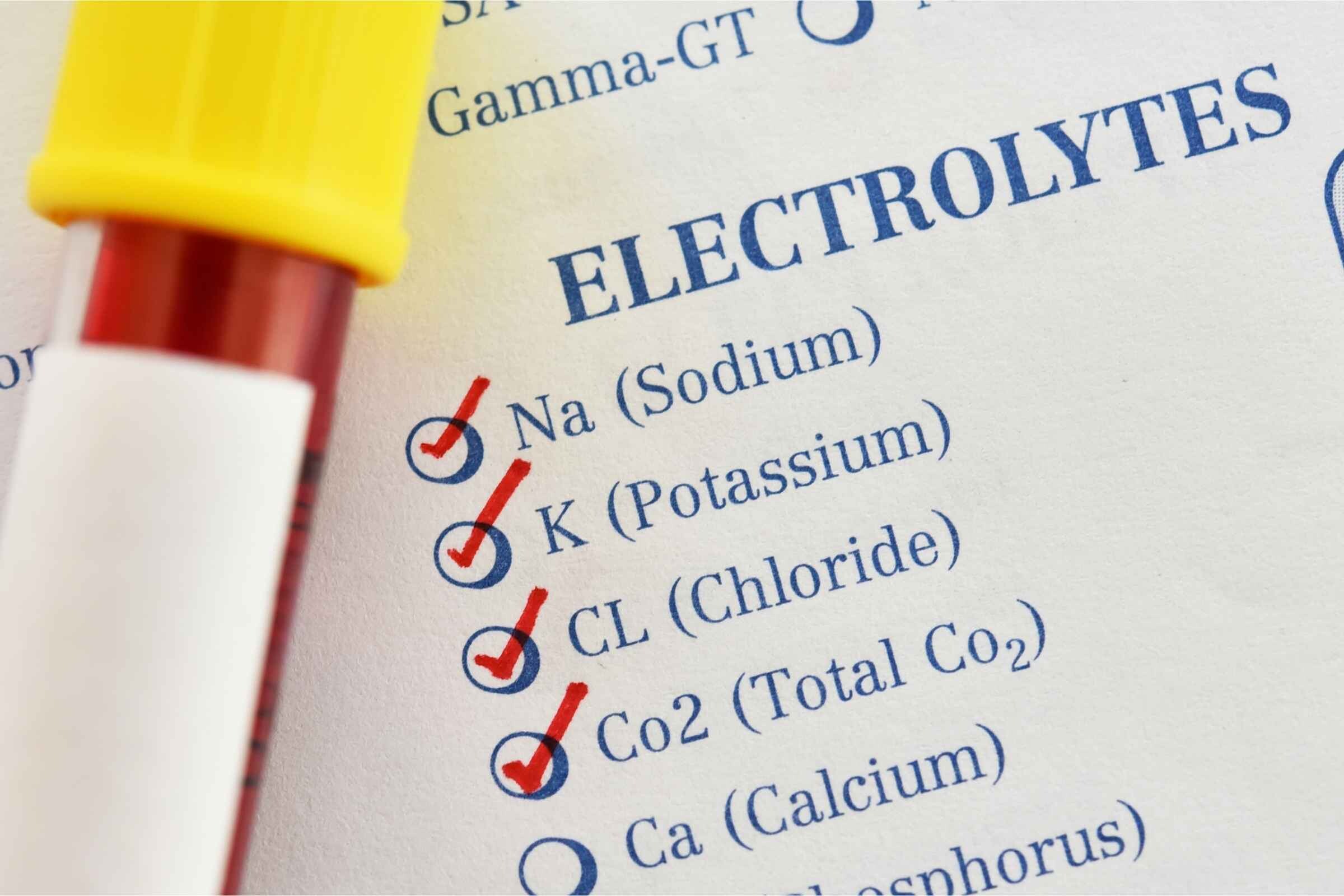 Elektrolyte – Die unsichtbaren Regisseure unseres KörpersElektrolyte steuern lebenswichtige Prozesse wie Muskelarbeit, Nervenfunktion und Flüssigkeitshaushalt. Erfahre, warum sie für Gesundheit und Leistung so entscheidend sind.
Elektrolyte – Die unsichtbaren Regisseure unseres KörpersElektrolyte steuern lebenswichtige Prozesse wie Muskelarbeit, Nervenfunktion und Flüssigkeitshaushalt. Erfahre, warum sie für Gesundheit und Leistung so entscheidend sind. -
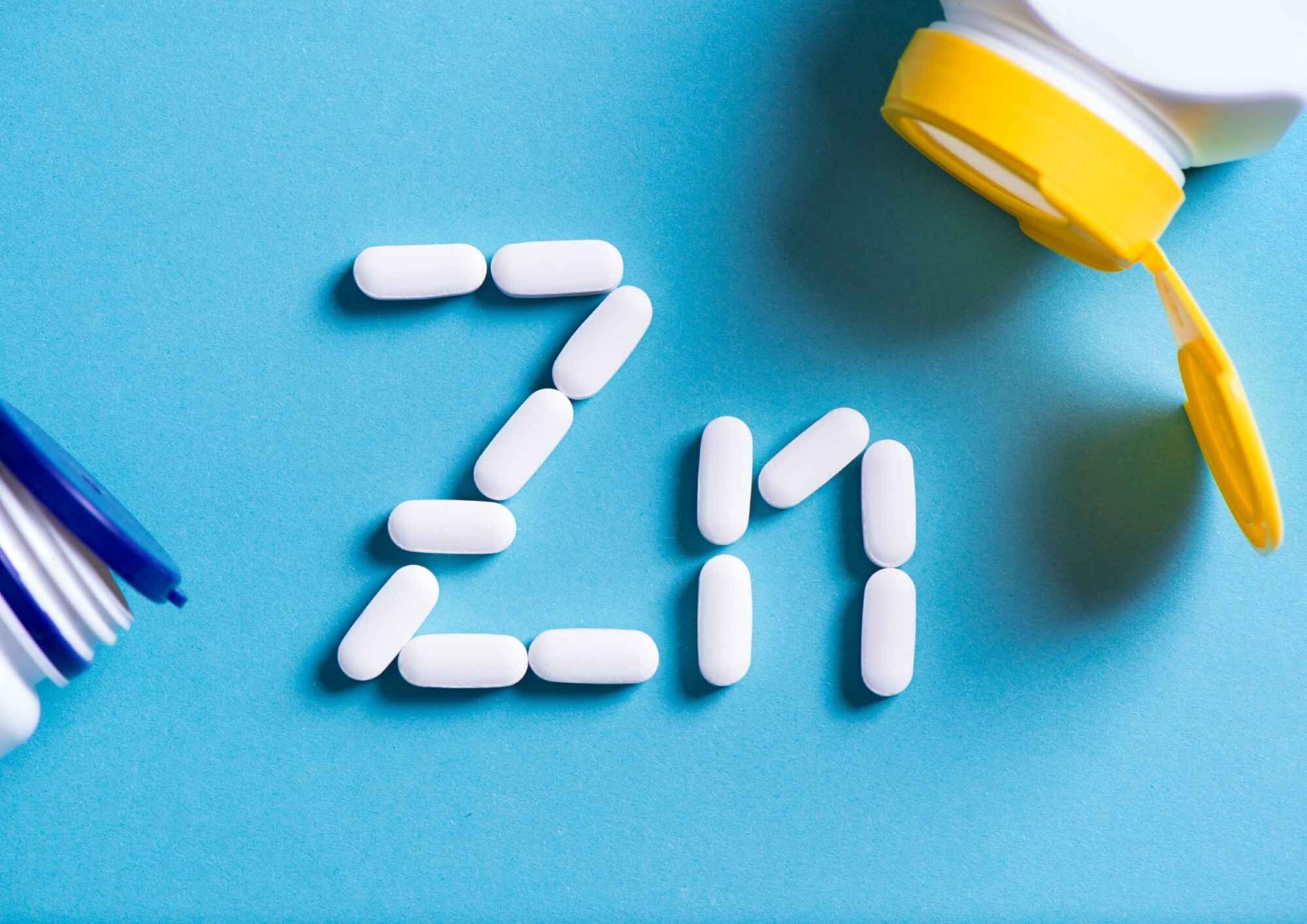 Zink reduziert nachweislich die Krankheitsdauer – Was sagt die Wissenschaft?Zink kann mehr als nur das Immunsystem stärken. Studien zeigen, dass es die Dauer von Erkältungen spürbar verkürzen kann.
Zink reduziert nachweislich die Krankheitsdauer – Was sagt die Wissenschaft?Zink kann mehr als nur das Immunsystem stärken. Studien zeigen, dass es die Dauer von Erkältungen spürbar verkürzen kann. -
 Milk thistle: effect on liver health and detoxificationHow does milk thistle really protect our liver? Find out how silymarin neutralizes free radicals, supports detoxification and what studies say about its effect on fatty liver, hepatitis & co. Find out more now!
Milk thistle: effect on liver health and detoxificationHow does milk thistle really protect our liver? Find out how silymarin neutralizes free radicals, supports detoxification and what studies say about its effect on fatty liver, hepatitis & co. Find out more now! -
 Menopause is not a disease: everything women (and men) should knowHalf of humanity is affected by the menopause. The PRO issue of Health Nerds is all about facts, myths and tips about the menopause.
Menopause is not a disease: everything women (and men) should knowHalf of humanity is affected by the menopause. The PRO issue of Health Nerds is all about facts, myths and tips about the menopause. -
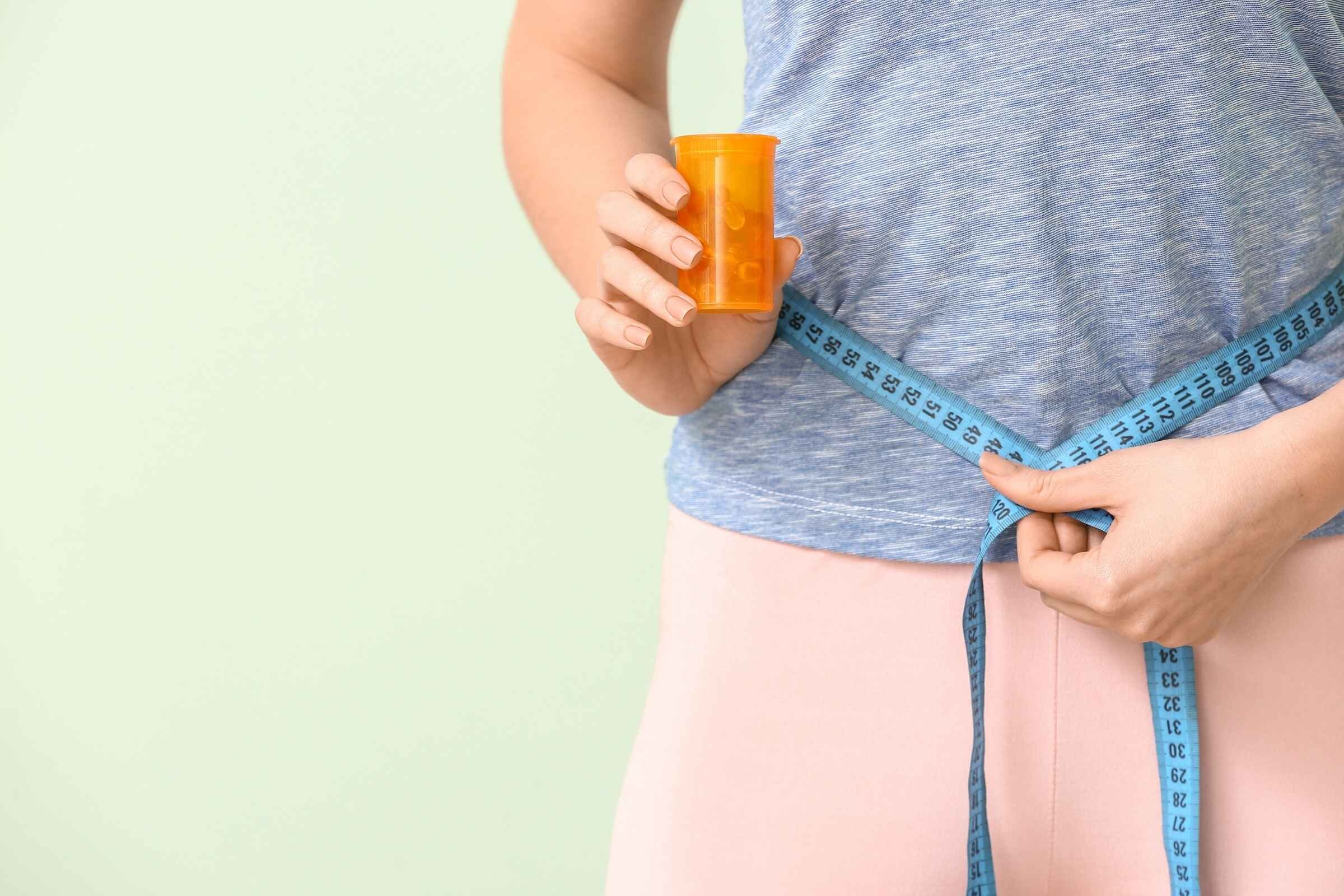 Stoffwechsel anregen – Ein Guide für mehr Energie, Gesundheit und GewichtsverlustIn diesem Guide erfährst Du, wie Du mit gezielter Ernährung, Bewegung, Schlaf, Stressmanagement und Alltagstricks Deinen Kalorienverbrauch auf natürliche Weise steigerst.
Stoffwechsel anregen – Ein Guide für mehr Energie, Gesundheit und GewichtsverlustIn diesem Guide erfährst Du, wie Du mit gezielter Ernährung, Bewegung, Schlaf, Stressmanagement und Alltagstricks Deinen Kalorienverbrauch auf natürliche Weise steigerst. -
 Hypothyreose und Übergewicht – Aktuelle Erkenntnisse und DatenSchilddrüsenunterfunktion verlangsamt den Stoffwechsel und begünstigt Gewichtszunahme. Erfahre Symptome und Tipps zur Unterstützung Deines Körpers.
Hypothyreose und Übergewicht – Aktuelle Erkenntnisse und DatenSchilddrüsenunterfunktion verlangsamt den Stoffwechsel und begünstigt Gewichtszunahme. Erfahre Symptome und Tipps zur Unterstützung Deines Körpers. -
 Elektrolyte – Die unsichtbaren Regisseure unseres KörpersElektrolyte steuern lebenswichtige Prozesse wie Muskelarbeit, Nervenfunktion und Flüssigkeitshaushalt. Erfahre, warum sie für Gesundheit und Leistung so entscheidend sind.
Elektrolyte – Die unsichtbaren Regisseure unseres KörpersElektrolyte steuern lebenswichtige Prozesse wie Muskelarbeit, Nervenfunktion und Flüssigkeitshaushalt. Erfahre, warum sie für Gesundheit und Leistung so entscheidend sind. -
 Zink reduziert nachweislich die Krankheitsdauer – Was sagt die Wissenschaft?Zink kann mehr als nur das Immunsystem stärken. Studien zeigen, dass es die Dauer von Erkältungen spürbar verkürzen kann.
Zink reduziert nachweislich die Krankheitsdauer – Was sagt die Wissenschaft?Zink kann mehr als nur das Immunsystem stärken. Studien zeigen, dass es die Dauer von Erkältungen spürbar verkürzen kann. -
 Milk thistle: effect on liver health and detoxificationHow does milk thistle really protect our liver? Find out how silymarin neutralizes free radicals, supports detoxification and what studies say about its effect on fatty liver, hepatitis & co. Find out more now!
Milk thistle: effect on liver health and detoxificationHow does milk thistle really protect our liver? Find out how silymarin neutralizes free radicals, supports detoxification and what studies say about its effect on fatty liver, hepatitis & co. Find out more now! -
 Menopause is not a disease: everything women (and men) should knowHalf of humanity is affected by the menopause. The PRO issue of Health Nerds is all about facts, myths and tips about the menopause.
Menopause is not a disease: everything women (and men) should knowHalf of humanity is affected by the menopause. The PRO issue of Health Nerds is all about facts, myths and tips about the menopause. -
 Stoffwechsel anregen – Ein Guide für mehr Energie, Gesundheit und GewichtsverlustIn diesem Guide erfährst Du, wie Du mit gezielter Ernährung, Bewegung, Schlaf, Stressmanagement und Alltagstricks Deinen Kalorienverbrauch auf natürliche Weise steigerst.
Stoffwechsel anregen – Ein Guide für mehr Energie, Gesundheit und GewichtsverlustIn diesem Guide erfährst Du, wie Du mit gezielter Ernährung, Bewegung, Schlaf, Stressmanagement und Alltagstricks Deinen Kalorienverbrauch auf natürliche Weise steigerst. -
 Hypothyreose und Übergewicht – Aktuelle Erkenntnisse und DatenSchilddrüsenunterfunktion verlangsamt den Stoffwechsel und begünstigt Gewichtszunahme. Erfahre Symptome und Tipps zur Unterstützung Deines Körpers.
Hypothyreose und Übergewicht – Aktuelle Erkenntnisse und DatenSchilddrüsenunterfunktion verlangsamt den Stoffwechsel und begünstigt Gewichtszunahme. Erfahre Symptome und Tipps zur Unterstützung Deines Körpers. -
 Elektrolyte – Die unsichtbaren Regisseure unseres KörpersElektrolyte steuern lebenswichtige Prozesse wie Muskelarbeit, Nervenfunktion und Flüssigkeitshaushalt. Erfahre, warum sie für Gesundheit und Leistung so entscheidend sind.
Elektrolyte – Die unsichtbaren Regisseure unseres KörpersElektrolyte steuern lebenswichtige Prozesse wie Muskelarbeit, Nervenfunktion und Flüssigkeitshaushalt. Erfahre, warum sie für Gesundheit und Leistung so entscheidend sind. -
 Zink reduziert nachweislich die Krankheitsdauer – Was sagt die Wissenschaft?Zink kann mehr als nur das Immunsystem stärken. Studien zeigen, dass es die Dauer von Erkältungen spürbar verkürzen kann.
Zink reduziert nachweislich die Krankheitsdauer – Was sagt die Wissenschaft?Zink kann mehr als nur das Immunsystem stärken. Studien zeigen, dass es die Dauer von Erkältungen spürbar verkürzen kann. -
 Milk thistle: effect on liver health and detoxificationHow does milk thistle really protect our liver? Find out how silymarin neutralizes free radicals, supports detoxification and what studies say about its effect on fatty liver, hepatitis & co. Find out more now!
Milk thistle: effect on liver health and detoxificationHow does milk thistle really protect our liver? Find out how silymarin neutralizes free radicals, supports detoxification and what studies say about its effect on fatty liver, hepatitis & co. Find out more now!
Empfohlene Produkte
Holistic support for bones, joints, muscles & skin
For your well-being – inside and outEssential Vitamin for Eyes, Skin, and Immune System
High-Dose Support for Cells & Immune DefenseFor your universal protection
As one of the most valuable proteins in the body, lactoferrin is a natural component of the immune system.For your iron balance
Specially formulated for your iron balance with plant-based curry leaf iron, Lactoferrin CLN®, and natural Vitamin C from rose hips.Holistic support for bones, joints, muscles & skin
For your well-being – inside and outEssential Vitamin for Eyes, Skin, and Immune System
High-Dose Support for Cells & Immune DefenseFor your universal protection
As one of the most valuable proteins in the body, lactoferrin is a natural component of the immune system.For your iron balance
Specially formulated for your iron balance with plant-based curry leaf iron, Lactoferrin CLN®, and natural Vitamin C from rose hips.Holistic support for bones, joints, muscles & skin
For your well-being – inside and outEssential Vitamin for Eyes, Skin, and Immune System
High-Dose Support for Cells & Immune DefenseFor your universal protection
As one of the most valuable proteins in the body, lactoferrin is a natural component of the immune system.For your iron balance
Specially formulated for your iron balance with plant-based curry leaf iron, Lactoferrin CLN®, and natural Vitamin C from rose hips.Holistic support for bones, joints, muscles & skin
For your well-being – inside and outEssential Vitamin for Eyes, Skin, and Immune System
High-Dose Support for Cells & Immune DefenseFor your universal protection
As one of the most valuable proteins in the body, lactoferrin is a natural component of the immune system.For your iron balance
Specially formulated for your iron balance with plant-based curry leaf iron, Lactoferrin CLN®, and natural Vitamin C from rose hips.

